Full hybrid vehicles offer many advantages: They do not have to be charged at the socket, are more efficient than pure combustion engines and this drive variant does not have a range anxiety like that of an electric car, although it is even possible to drive purely electrically for a short time.
Toyota Yaris Cross Hybrid
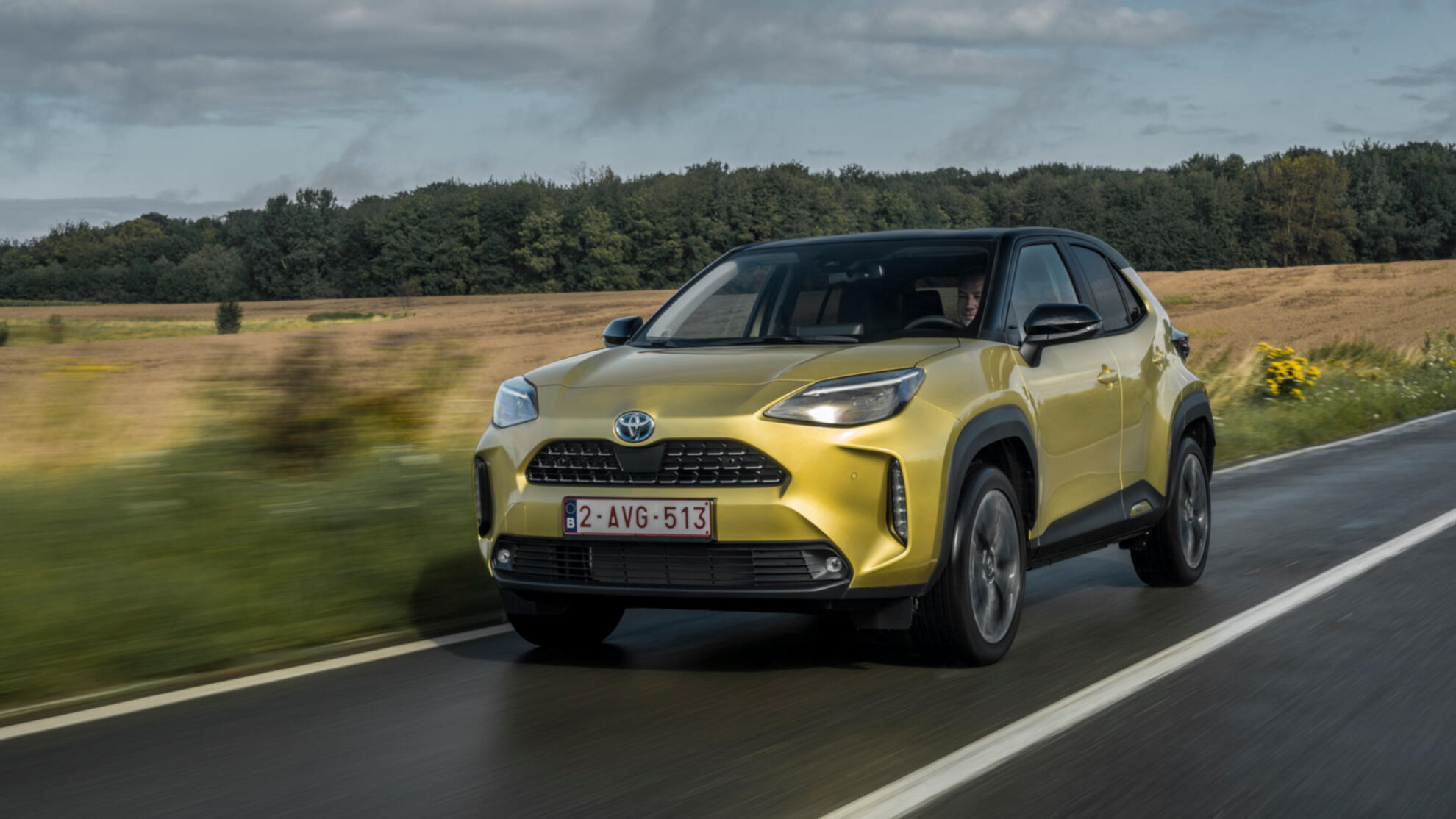
Finally, Toyota also has an offer in the boom segment of small SUVs: With the Yaris Cross Hybrid, the Japanese market leader is taking its successful small car bestseller Yaris to a new level. A little more moderate in design, a little higher in the seating position and a little more suitable for off-road use, because its hybrid drive can now also be combined with all-wheel drive.
Toyota gives the city runabout the necessary style, for example with two-tone paint and with a proper interior that meets European tastes. Full smartphone integration in the brand new infotainment is just as much a part of the equipment as an amazingly large trunk.
But the portrait-format body concept helps, in which more space can be accommodated in a small area.
- Price from CHF 26'400.-
- Drive: Petrol hybrid, 85 kW/116 hp
- Luggage compartment: 397 – 1,097 l
- Consumption: 4.4 l/100 km
- CO₂ emissions: 101 g/km
- Efficiency class A
- Total emissions (at 200,000 km): approx. 47.7 t CO2
- Cost/year (for 15,000 km): approx. CHF 8,676
Mazda 2 Hybrid

Before Mazda reinvents itself with six-cylinder engines and rear-wheel drive, the brand is refreshing its smallest model. And actually, the new Mazda 2 is an old acquaintance – because the Japanese brand will be allowed to offer the Yaris from cooperation partner Toyota under its own logo from this year.
This means that brand fans have to do without the brand-typical design of the predecessor, but can save a lot of fuel money with the hybrid drive from the Toyota shelf. Exterior shell, interior, seats and cockpit: only the logo reveals the brand in comparison. But this is also how Mazda can enjoy the only full hybrid in the small car segment. Which, with 116 hp and an improved continuously variable transmission, is also fast.
And those who still long for the previous model can breathe a sigh of relief. Because that is still offered.
- Price from CHF 27,750.
- Drive: Petrol hybrid, 85 kW/116 hp
- Trunk: 319 – 768 l
- Consumption: approx. 3.8 l/100 km
- CO₂ emissions: approx. 107 g/km
- Efficiency class A
- Total emissions (at 200,000 km): approx. 36.4 t CO2
- Cost/year (for 15,000 km): approx. CHF 7,714
Honda HR-V
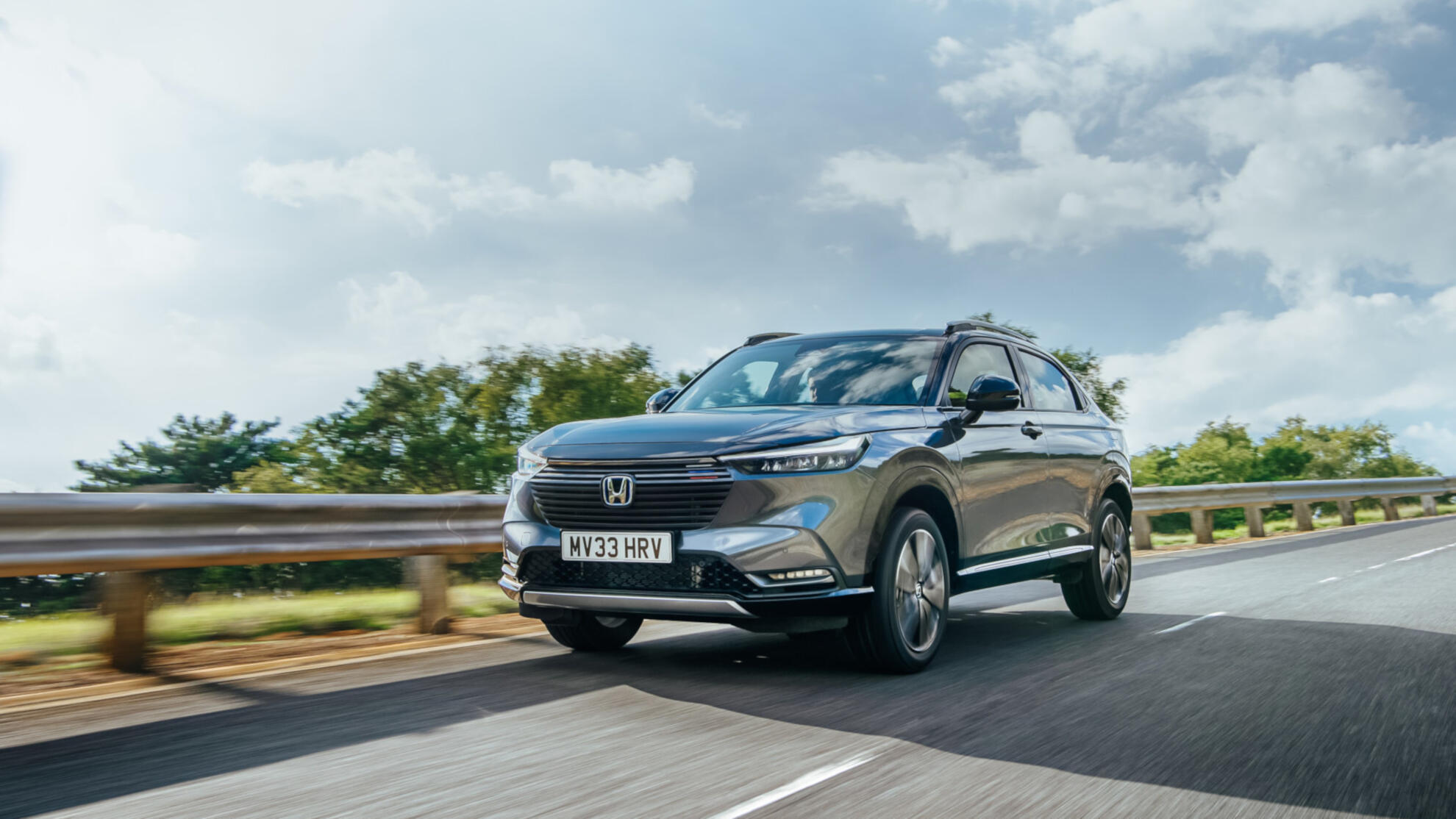
Honda's Highrider vehicle – that's what the abbreviation HR-V means – is entering the next generation. While the predecessor was still a rather rounded crossover, the new one looks razor-sharp and ties in with the groundbreaking Honda design of the past.
And it also makes a difference in the drive – there is only one. The hybrid drive combines the driving experience of an electric car with the range carelessness that we know from combustion models: An electric motor drives largely on its own; the gasoline engine supplies the necessary electricity via generator. This means that the five-seater starts at the traffic lights as fast as an electric car – only at higher speeds does the combustion engine have to step in for propulsion. Perfect for all those who don't want to dare to drive an electric car as a lamppost parker, but love the kick.
- Price from CHF 35'990.-
- Drive: Petrol hybrid, 96 kW/131 hp
- Luggage compartment: 319 – 1,289 l
- Consumption: 5.4 l/100 km
- CO₂ emissions: 122 g/km
- Efficiency class B
- Total emissions (at 200,000 km): approx. 47.3 t CO2
- Cost/year (for 15,000 km): approx. CHF 9,505
Nissan Qashqai e-Power
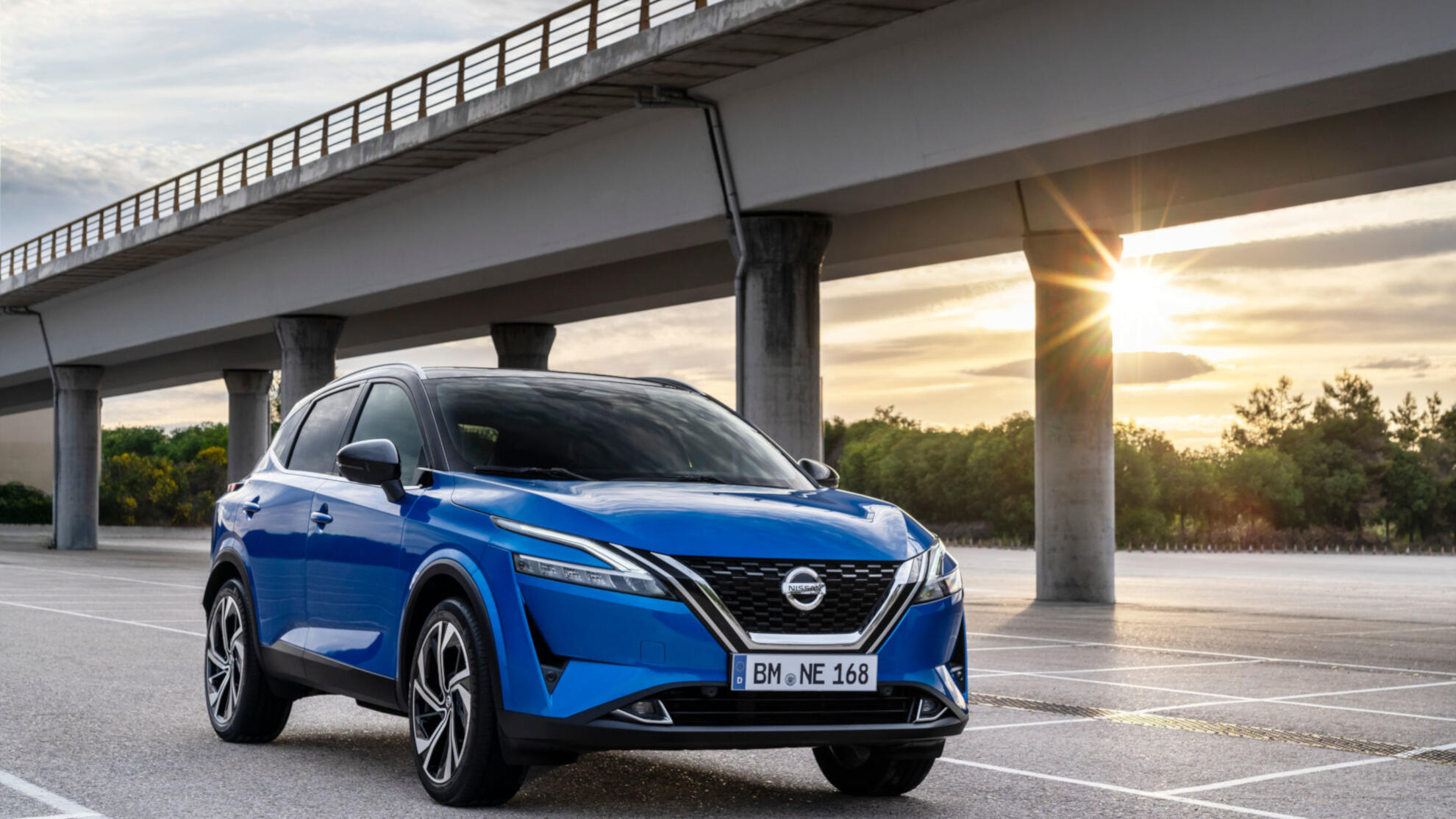
17 years ago, the brand founded the compact SUV segment with the first Qashqai, which is still booming today. The current generation, which was only launched in 2021, now comes up with an innovative top model - an electric car, so to speak, that carries its own power plant with it. This is because the Nissan Qashqai e-Power is purely electrically driven, but generates its electricity directly on board.
As with an electric car, an electric motor with 190 hp works on the front axle. The electricity is supplied by a gasoline engine with only 145 hp. How does that work? By always operating as fuel-efficiently as possible, storing excess electricity in a buffer battery and then providing enough energy for the sprint at maximum power.
Because you take your foot off the accelerator pedal and let it roll for about a third of an everyday journey anyway, the combustion engine only has to run intermittently – which also saves fuel. In other words, another electric car for drivers who do not have a power outlet within reach of their parking space.
- Price from 41'590 CHF
- Drive: Electric hybrid, 140 kW/190 hp
- Luggage compartment: 480 – 1,447 l
- Consumption: n/a
- CO₂ emissions: n/a
- Efficiency class n/a
- Total emissions (at 200,000 km): n/a
- Costs/year (at 15,000 km): n/a
Lexus NX 350h
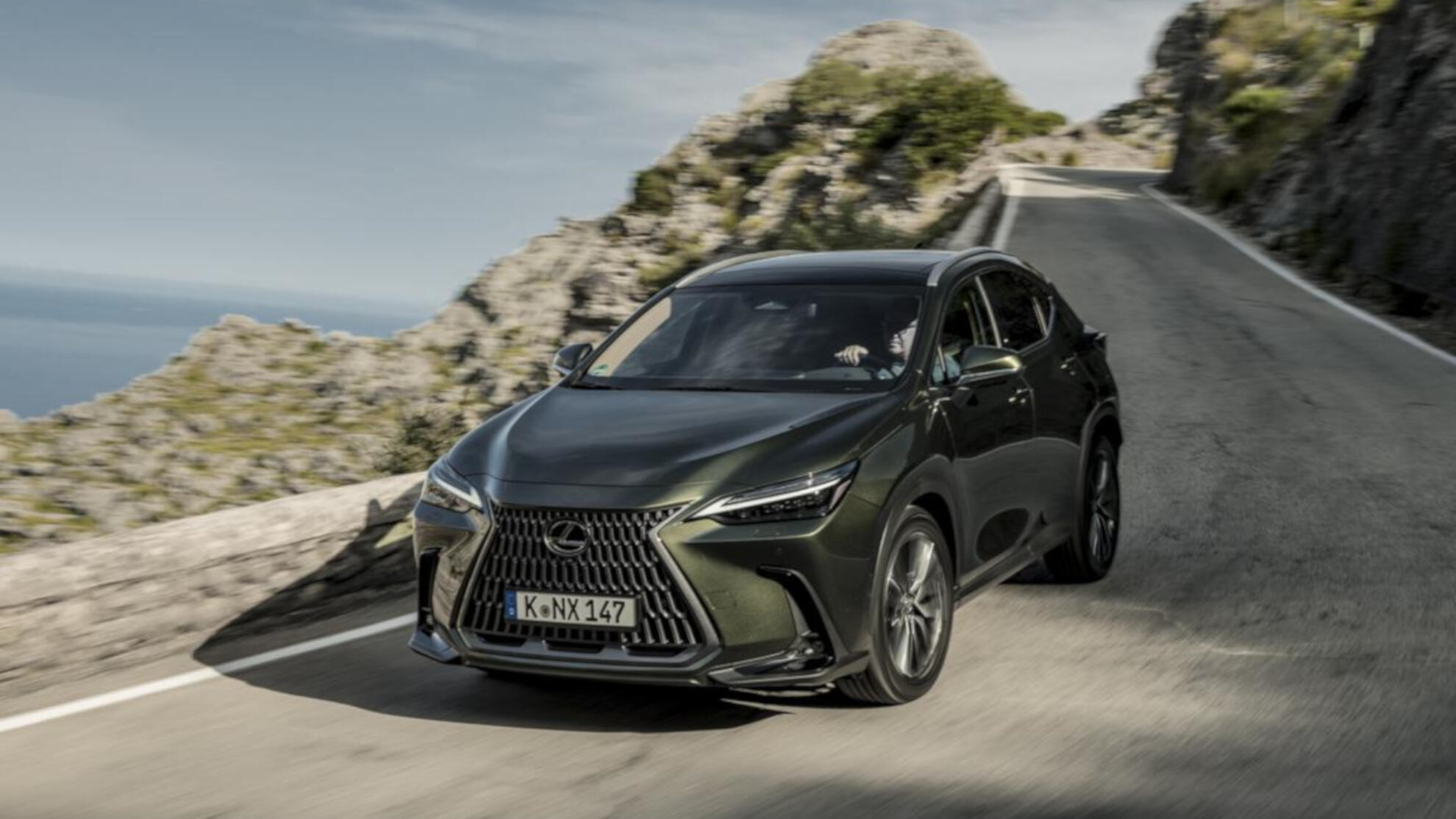
This is supposed to bring Toyota's luxury brand great growth - and that could work. Because in the second generation of the NX mid-size SUV, Lexus has redesigned its cockpit so freshly that you will be surprised - about the workmanship, connectivity and the finally easy operation. And about proper materials and fine surfaces that make the five-seater from Japan look almost European.
You don't have to do without the classic hybrid drive – if you want it to be a bit electric, but charging would have to be done under the street candelabra, the hybrid still makes sense. And it also fits better into some family budgets.
- Price from CHF 54'900.-
- Drive: Petrol hybrid, 179 kW/243 hp
- Luggage compartment: 545 – 1,436 l
- Consumption: 5.7 l/100 km
- CO₂ emissions: 158 g/km
- Efficiency class B
- Total emissions (at 200,000 km): approx. 55.1 t CO2
- Cost/year (for 15,000 km): approx. CHF 11,969
Renault Arkana
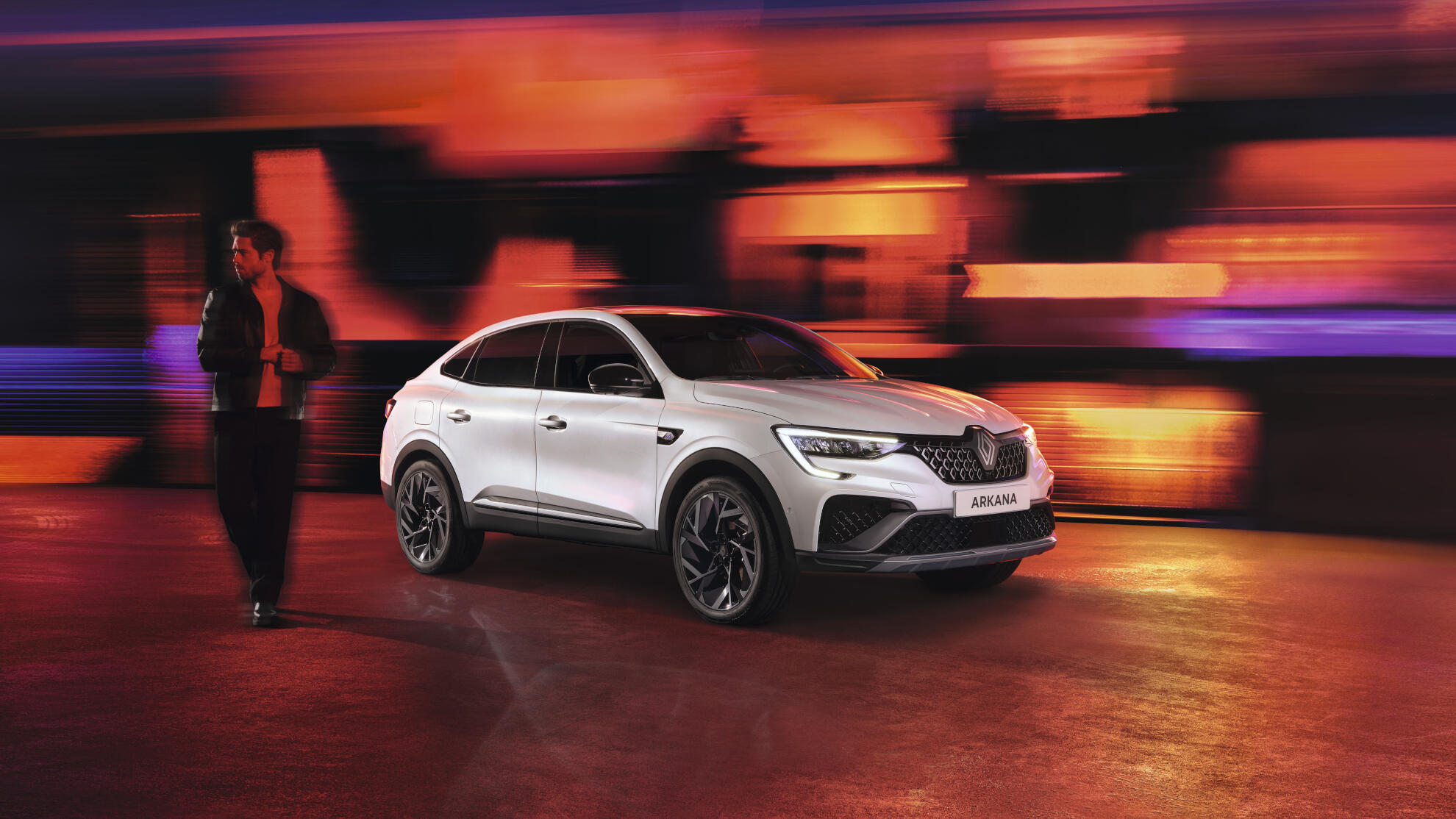
The Renault Arkana stands for a new generation of vehicles that can be described as "hybrid" in two respects – in body style and in drive. The shapes of a coupé are combined with the attributes of an SUV – a so-called SUV coupé, sporty but with a higher seating position. Renault has just refreshed it visually at the halfway point of the model cycle.
Renault also relies on hybrids for the engine. The E-TECH 145 combines a 1.6-litre four-cylinder engine with 94 hp and an electric unit with 49 hp, which together reduce fuel consumption to 4.8 l/100 km. There is still a little money left in the wallet for one or the other extra.
- Preis ab CHF 33’890.-
- Antrieb: Benzin-Hybrid, 105 kW/143 PS
- Kofferraum: 480 – 1’263 l
- Verbrauch: 4,8 l/100 km
- CO₂-Ausstoss: 109 g/km
- Effizienzklasse A
- Gesamtemissionen (bei 200’000 km): ca. 47,0 t CO2
- Kosten/Jahr (bei 15’000 km): ca. CHF 9’379.-
Hyundai Tucson Hybrid
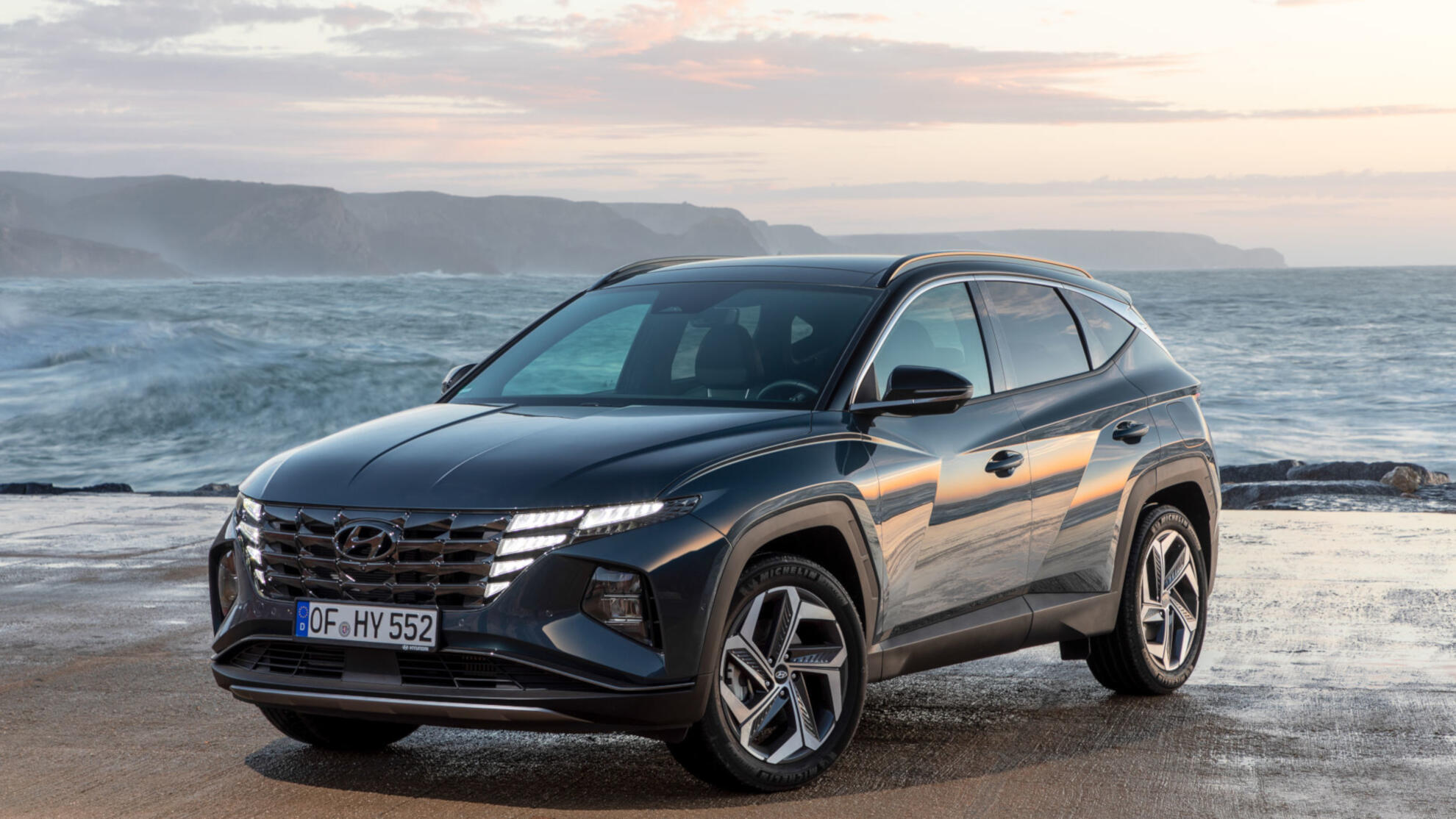
As a hybrid, Hyundai's extravagant Tucson advances into new dimensions in terms of performance. The combustion engine and electric motor together produce 230 hp – more than enough to propel the compact five-seater with the huge trunk forward quickly.
Of course, the look is much more striking: Hyundai has never dared to do so much with beading, folding and pinching in the sheet metal and LED headlights à la sports field floodlights. Looks dazzling, by day as well as at night.
But the really funny details can be found in the interior. For example, in the buttons for gear selection instead of a transmission lever. In full connectivity or the razor-sharp reversing camera. And in the smart exterior mirrors, in which cameras look backwards and play their image in the instruments when changing lanes. This also inspires cyclists in the blind spot.
- Price from CHF 40'300.-
- Drive: Gasoline hybrid, 169 kW/230 hp
- Luggage compartment: 616 – 1,795 l
- Consumption: 5.9 l/100 km
- CO₂ emissions: 135 g/km
- Efficiency class B
- Total emissions (at 200,000 km): n/a
- Costs/year (at 15,000 km): n/a
Suzuki SX4 S-Cross
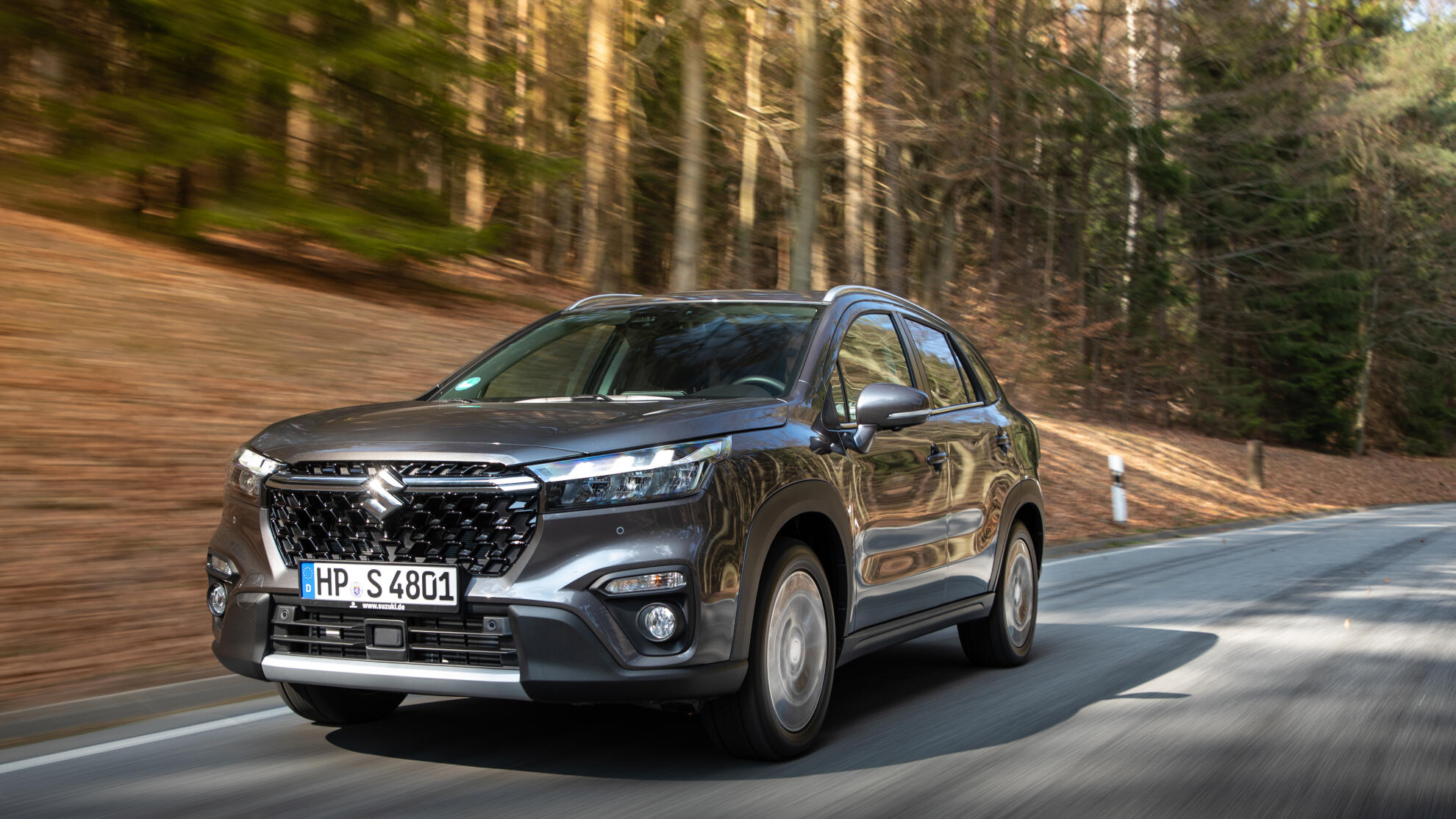
You want all-wheel drive, hybrid drive and plenty of space with compact body dimensions for little money? Then it gets quite tight – or you look at Suzuki. The compact SUV SX4 S-Cross, a kind of Swiss army knife among cars, has just been completely refreshed. Because it offers all-wheel drive even with the weakest engine and five seats plus plenty of space for family luggage. And even if the household budget does not allow such big leaps, it fits.
The optional glass roof provides a clear view, a whole bag of driving assistants for safety and the proper interior for a sense of well-being. This also suits touchscreen critics, because there are still good old buttons for many functions.
- Price from CHF 34'490.-
- Drive: Petrol hybrid, 85 kW/115 hp
- Trunk: 430 – 1,230 l
- Consumption: 5.8 l/100 km
- CO₂ emissions: 131 g/km
- Efficiency class B
- Total emissions (at 200,000 km): n/a
- Costs/year (at 15,000 km): n/a
Ford Kuga FHEV

Ford is also on the verge of electric mobility. But the SUV Kuga is still the bestseller of the European offshoot of the US brand. It has just been refreshed with visual retouches, improvements in the interior and a streamlined drive program. Because: The diesel versions are over.
The job as the range king is now taken over by the hybrid version of the five-seater, which is also available as an all-wheel-drive vehicle, suitable for Switzerland. The Kuga can cover up to 900 kilometres on a single tank of fuel. And with a new towing capacity of 2.1 tonnes, you can also tow your horse or boat in your free time.
Otherwise, many things remain the same for everyday use in the all-rounder – such as the bulging equipment with assistance systems or the practical sliding rear bench for more cargo or footroom in the second row of seats.
- Price from CHF 47'850.-
- Drive: Petrol hybrid, 134 kW/183 hp
- Trunk: 526 – 1,534 l
- Consumption: 6.4 l/100 km
- CO₂ emissions: 146 g/km
- Efficiency class D
- Total emissions (at 200,000 km): n/a
- Costs/year (at 15,000 km): n/a
Kia Sorento
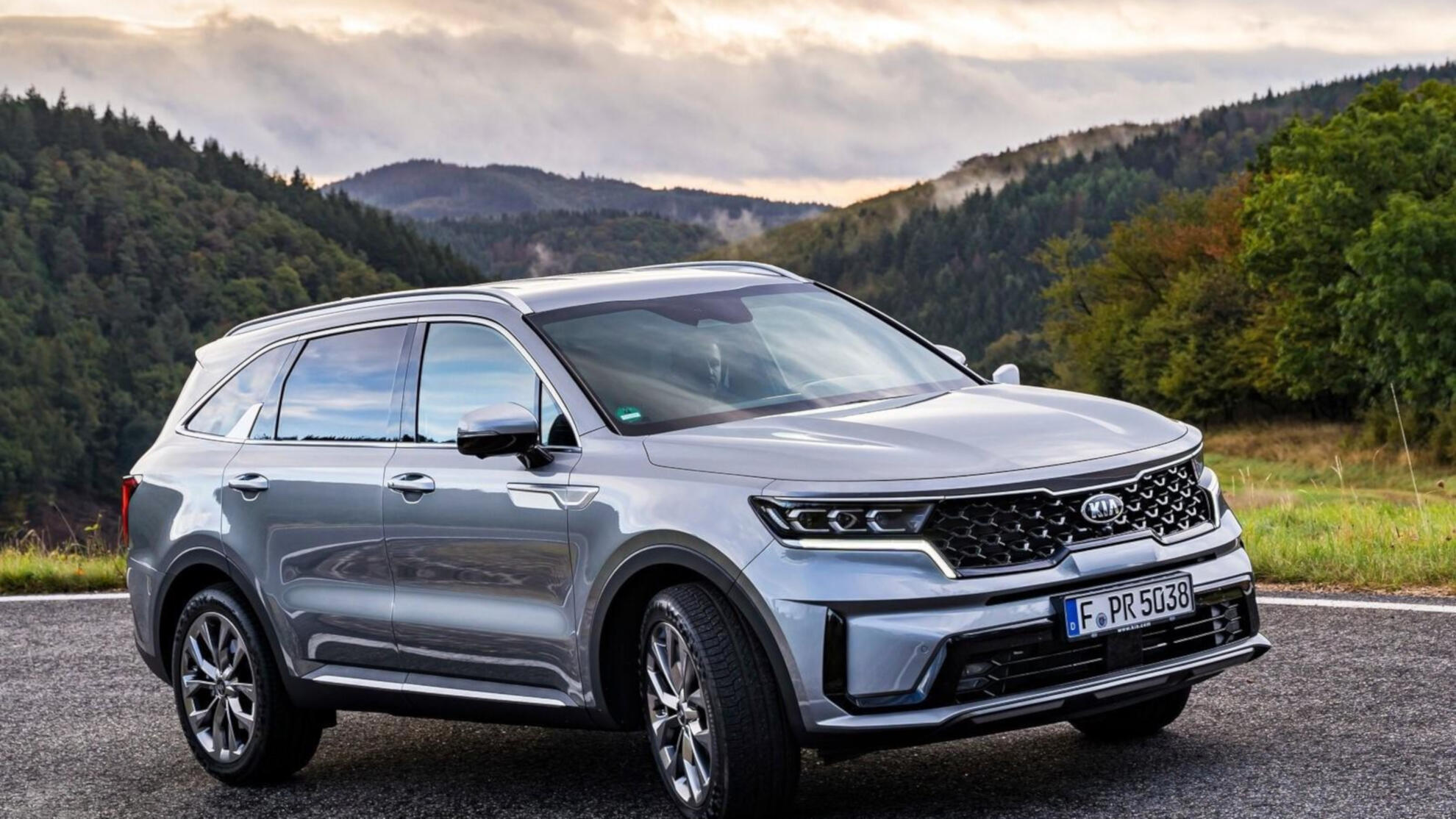
Whether it's a 4×4, plenty of space, comfort or chic design – there's almost nothing the Kia Sorento can't offer. With the full hybrid engine offered for the first time, the South Korean is now finally becoming the perfect all-rounder. The 1.6 l T-GDI achieves a system output of 230 hp and 350 Nm, with a consumption of 7.5 l / 100 km/h. However, the Sorento is not cheap - but there is also a lot of car for the money.
- Price from CHF 53'850.-
- Drive: Gasoline hybrid, 169 kW/230 hp
- Luggage compartment: 902–2,085 l
- Consumption: 7.5 l/100 km
- CO₂ emissions: 170 g/km
- Efficiency class D
- Total emissions (at 200,000 km): approx. 65.3 t CO2
- Cost/year (for 15,000 km): approx. CHF 13,120
